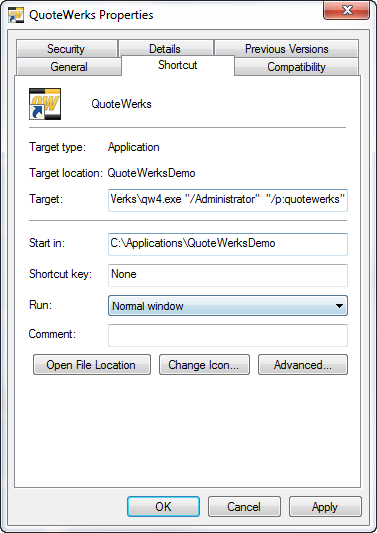A command line parameter uses the following syntax:
/Command:Argument1,Argument2
Where “Command” is the actual command. The “:” symbol (colon) separates the command from any additional arguments that the command may require. A “,” (comma) separates arguments from each other.
Parameter Syntax Example

The following example makes use of all the syntax described. In this example, we are using two command line parameters.
/u:”Administrator” /p:quotewerks
Note that each separate command line parameter must be separated by a space. If a command line parameter argument contains a space in it, the argument must be surrounded by double quote symbols. Depending upon the command, if there is an error related to the command, it will be displayed in the QuoteWerks status bar, or it will be logged in the \QuoteWerks\eventlog.txt file.
The first command is “/u”. This is used to specify the user login id. The “:” after the “/u” separates the user login id command from the user login name argument of “John Lewe”. Notice that since the login id of “John Lewe” has a space in it, we had to surround it with double quote symbols.
The second command is “/p”. This is used to specify the login password. Notice that we put a space before the “/p” to indicate that this is a separate command line parameter. The “:” after the “/p” separates the user login password command from the user login password argument of “quotewerks”. Notice that since the user login password of “quotewerks” does not have any spaces in it, we did not have to surround this argument with double quote symbols.